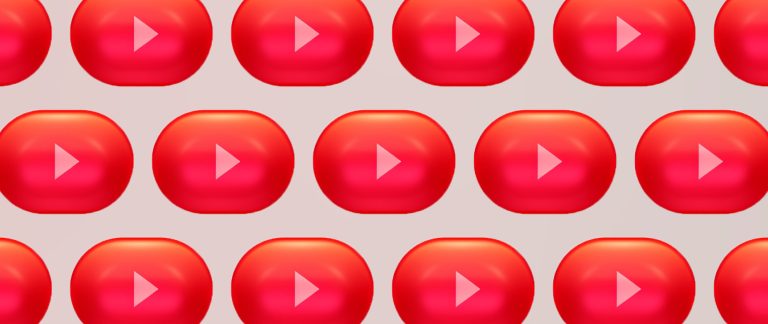Vertical short-form videos are immensely popular. You might think TikTok is responsible, but YouTube and Instagram both have successful short-form video programs as well.
According to Hubspot’s 2023 Video Marketing Report, short-form video content has a higher ROI and receives more engagement than any other type of video. This makes the form important—and lucrative—for brands and content creators alike.
Here’s how YouTube rewards Shorts creators, plus five ways to monetize the video style on YouTube.
How does revenue sharing work on YouTube Shorts?
YouTube rewards Shorts creators with a revenue-sharing system, generated from the Shorts ads they display between videos on the feed. The platform pools all Shorts ad revenue, then allocates a percentage to music publishers and a percentage to YouTube Shorts creators.Creators are paid based on their individual videos’ performance.
Here’s a more detailed breakdown of the revenue sharing process:
1. Ad sales. YouTube sells ad space to companies and displays ads between videos on the Shorts feed.
2. Revenue pooling. YouTube combines all revenue generated by Shorts feed ads.
3. Initial fund allocation. YouTube allocates a portion of Shorts revenue to its creator pool and another portion to music licensing costs. If a creator uploads a video with no music in it, all of the revenue associated with eligible video views goes into the creator pool.
4. Music fund allocation. If a creator’s content has one music track, half of the associated YouTube shorts funds will go to music usage and the other half will go to the creator pool. If it has two tracks, two-thirds of the funds will cover music usage and the remaining third goes to the creator pool.
5. Creator fund allocation. YouTube allocates creator pool funds based on the percentage of views the creator generated from their Shorts content during a given time period. For example, if a creator earned 4% of all Shorts views, 4% of the funds in the creator pool would be attributed to them.
6. Fund payment. Each creator is paid 45% of the revenue attributed to them. YouTube retains the remaining 55% of creator pool funds.
It is important to know that videos that violate intellectual property guidelines, such as reposted content owned by other creators and unedited clips from TV shows or movies aren’t eligible for monetization. Creators won’t earn revenue from content that violates YouTube’s advertiser-friendly content guidelines, such as content that uses inappropriate language or is derogatory, incendiary, or demeaning.
Who’s eligible to earn ad revenue from YouTube Shorts?
To monetize YouTube shorts, creators need to be enrolled in the YouTube Partner Program. To apply, creators need to meet one of the following thresholds:
Have 500 subscribers, plus three public posts in the past 90 days, and three million valid public Shorts views in the past 90 days.
Have 500 subscribers and three public posts in the past 90 days, plus 3,000 valid public watch hours on long-form videos in the past 12 months. This qualification standard doesn’t count hours from Shorts, livestreams, ad campaigns, private videos, unlisted videos, or deleted videos.
Once you meet these thresholds, you can apply to YouTube’s Partner Program. YouTube will review your channel and determine your eligibility, a process that usually takes about a month. Additional eligibility requirements include the following:
The channel must follow all YouTube channel monetization policies.
The creator must live in a country where the program is available.
The creator can’t have any active community guidelines strikes against their channel.
The channel must have two-step verification turned on and advanced features enabled.
The creator must have or obtain an AdSense account.
How to opt-in for YouTube Shorts monetization
Once you’ve been accepted into the YouTube Partner Program, you’ll need to accept the Shorts Monetization Module to start earning funds. Here’s how to turn it on:
1. Sign in to YouTube Studio.
2. Select Earn from the left menu.
3. Accept the Shorts Monetization Module.
4. If you haven’t already accepted the Base Terms module, accept that as well.
How much can you earn from Shorts?
YouTube launched its Shorts ad revenue sharing model in February 2023 in an effort to simplify the music licensing process and allow creators to earn more money on the platform.
Here’s an example of how earnings might work for a brand or Shorts creator:
1. You upload a Shorts video in the United States and that Short receives a million views in a month.
2. There are 400 million total Shorts views on videos uploaded by monetizing creators in the United States that month, and YouTube earns $200,000 from ads appearing in the Shorts feed.
3. Of the monetized Shorts viewed, 30% use no music, 30% use one music track, and 40% use two music tracks.
4. YouTube allocates money to the creator fund based on views per Short. In this example, views are evenly distributed across all Shorts. YouTube would allocate:
100% of revenue earned by videos with no music to the creator fund
50% of the revenue earned by videos using one track to the creator fund
33% of the revenue earned by videos using two tracks to the creator fund.
In this case, YouTube allocates $116,666 to the creator pool and the remainder to the music licensing fund.
5. Your million views make up 0.25% of the total monetized YouTube Shorts views that month, so your share of the creator fund is $116,666 x 0.0025 = $291.
6. YouTube will pay you 45% of your revenue share of the creator pool, or $130.24.
YouTube creators evaluate revenue using revenue per mille (RPM), which is the revenue earned per 1,000 views on the platform. In this case, your RPM would be 13¢, or $131.85 / 1,000. By contrast, YouTube creators who make long-form videos typically average $1 to $2 RPM.
Are there other ways to monetize YouTube shorts?
Although participating in the YouTube Partner Program is the only ad-based Shorts monetization option offered by YouTube, it isn’t the only way to earn money as a Shorts creator. Here’s a list of ideas to earn money:
Sell subscription memberships
Turning on YouTube’s channel memberships allows you to charge monthly payments in exchange for perks like exclusive content, live chats, badges, and emojis. To turn on channel memberships, sign in to YouTube Studio, click Earn, and visit the Memberships tab.
Monetize livestreams
YouTube allows creators to monetize livestreams using super chat and super stickers, which allow fans to pay to send highlighted messages or animated stickers in live stream chats.
Sell merchandise and products
Creators and brands can make money by selling merchandise online. You can sell branded merchandise (like apparel featuring your image, logo, or favorite catchphrase) or launch a product line associated with your specific content niche. Brands can use YouTube to create product videos and promote new offerings.
Creators typically sell products through an ecommerce platform like Shopify and continue to create and publish engaging content on YouTube to build brand loyalty, attract new audiences, and promote their products.
Secure paid brand partnerships
Brand partnerships are another method of video monetization. Instead of having YouTube sell ad space on your behalf, you interact directly with brands to negotiate sponsorship deals. Typically, brands pay creators to record and publish product reviews, endorsements, or other types of content. If you’re interested in securing a paid partnership, you can develop a creator website, approach brands directly, or join an influencer platform to help brands find and contact you.
Join an affiliate program
Affiliate programs pay creators for revenue associated with clicks to links hosted on the creator’s YouTube channel or another platform. For example, the Shopify Affiliate Program partners with educators, influencers, and content creators who educate their audience about entrepreneurship.
Get paid by brands you love with Shopify Collabs
Shopify Collabs makes it easy to find brands that match your vibe, build affiliate relationships, get paid for what you sell, and track everything in one place.
Learn about Shopify Collabs
YouTube Shorts monetization FAQ
Can I get monetized on YouTube Shorts?
To monetize your Shorts, you need to apply for and be accepted into the YouTube Partner Program and turn on the Shorts Monetization Module.
Where can I see my Shorts ad revenue?
YouTube analytics displays estimated daily Shorts Feed ad revenue. You can also see your actual earnings in YouTube Studio’s Content section.
Why is Shorts ad revenue pooled?
YouTube pools Shorts revenue for three reasons:
1. YouTube doesn’t display mid-roll ads during short-form videos.
2. YouTube attributes Shorts Feed ad revenue to the overall Shorts viewing experience, not to the quality of individual videos.
3. Revenue sharing simplifies the music licensing process.






0 Comments